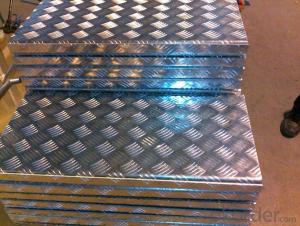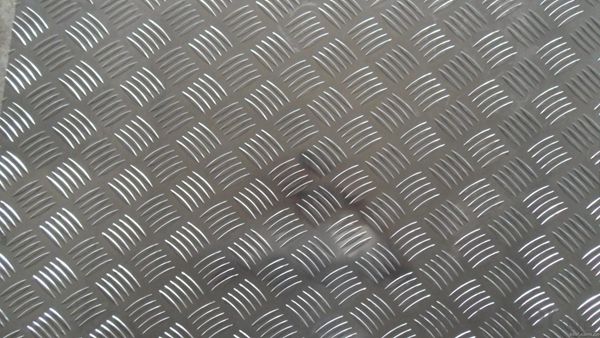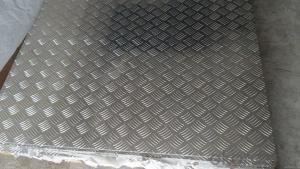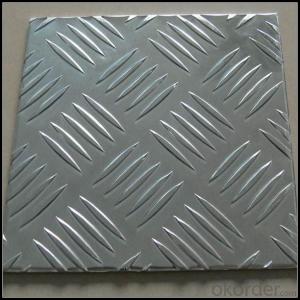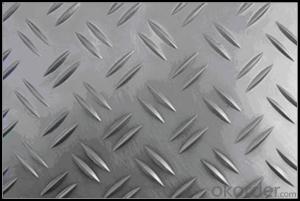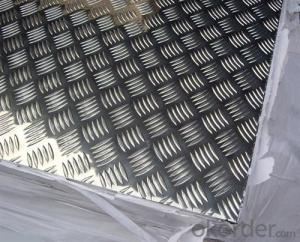Aluminum Foil Sheets Five Bar Treadplate Aluminium Panel for Tool Box
- Loading Port:
- Shanghai
- Payment Terms:
- TT OR LC
- Min Order Qty:
- 5 m.t.
- Supply Capability:
- 10000 m.t./month
OKorder Service Pledge
OKorder Financial Service
You Might Also Like
Specification
1. Specification of Five Bar Treadplate Aluminium Panel for Tool Box
Alloy Number | AA1XXX,AA3XXX,AA5XXX |
Temper | H12, H14, H16, H18, H22, H24, H26, H32, HO, F |
Thickness | 0.1mm – 500mm |
Width | 10mm- 2200mm |
Standard | GB/T3880-2006, ASTM, ISO, EU standard |
2. Application of Five Bar Treadplate Aluminium Panel for Tool Box
Transfporation, vehicle, antiskid plate,toolbox,canopy body,
3. Feature of Five Bar Treadplate Aluminium Panel for Tool Box
Surfact Quality :
Be free from Oil Stain, Dent, Inclusion, Scratches, Stain, Oxide Dicoloration, Breaks, Corrosion, Roll Marks, Dirt Streaks and other defect which will interfere with use,
Mechenical Property:
Chemical Composite and Mechanical Property
4. Certificate:
SGS and ROHS(if client request, paid by client), MTC(plant provided), Certificate of Origin(FORM A, FORM E, CO), Bureau Veritas and SGS (if client request, paid by client), CIQS certificate
5. Image of Five Bar Treadplate Aluminium Panel for Tool Box
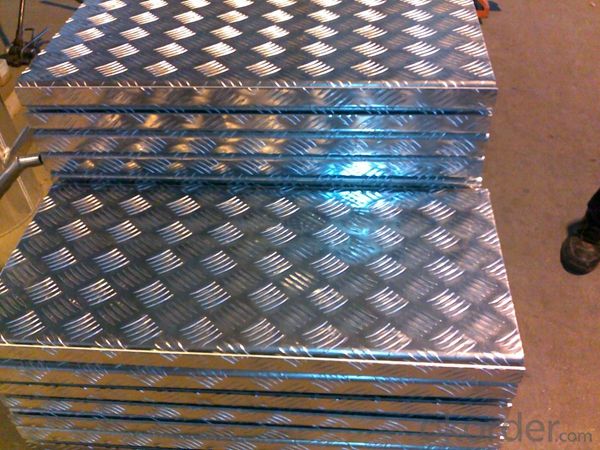
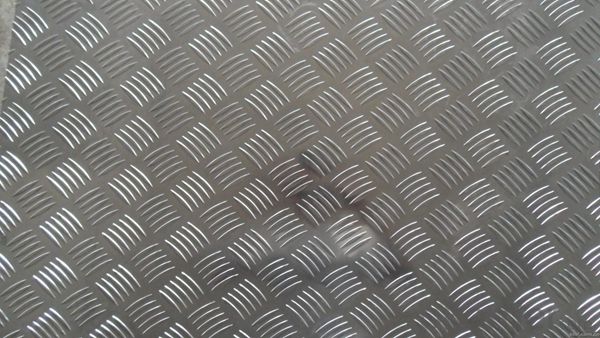
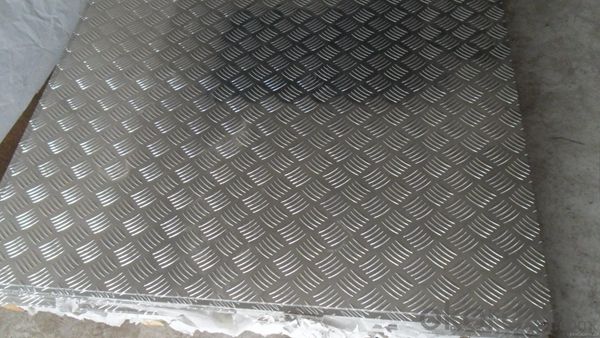
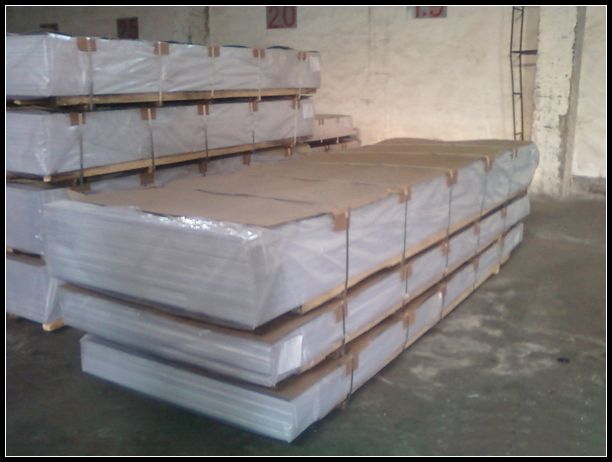
6. Package and shipping of Five Bar Treadplate Aluminium Panel for Tool Box
First, plastic cloth with drying agent inside; Second, Pearl Wool ; Third, wooden cases with dry agent , fumigation wooden pallets, aluminum surface could cover blue PVC film
7. FAQ
1) What is the delivery time?
Dpends on actual order, around 20 to 35 days
2)What is the QC system:
We have QC staff of 20 persons and advanced equipment, each production is with MTC traced from Aluminum ingot lot.
3) What market do you mainly sell to?
Australia, America, Asia, Middle East, Western Europe, Africa etc
- Q: How do aluminum sheets perform in terms of thermal expansion?
- Aluminum sheets have a relatively high coefficient of thermal expansion, meaning they expand significantly when exposed to heat and contract when cooled. This is due to the nature of aluminum as a metal, which has a relatively low melting point and is known for its ability to conduct heat efficiently. When aluminum sheets are heated, the increased energy causes the metal atoms to vibrate and move more rapidly, resulting in expansion. Conversely, when aluminum sheets are cooled, the decrease in energy causes the metal atoms to slow down and move closer together, leading to contraction. It is important to consider the thermal expansion properties of aluminum sheets when using them in applications where temperature changes are expected, as this can affect the overall dimensions and performance of the material.
- Q: I want to make a part using molten aluminum with a hole through the middle and would like to use a steel rod to do this. Would the bar stick to the aluminum when it cools and not be able to be removed? If so is there so type of coating I can use so it can be removed?
- Unless the surface was specially prepared the aluminum won't bond to the steel. To be sure it doesn't, simply 'smoke ' the steel with a candle etc. (thin layer of carbon black), to ensure no bonding. Your problem will come from the different co-efficients of expansion. The aluminum will shrink more than the steel in cooling and will grab that rod very tightly. Your hole, ( therefore your rod), will have to have a considerable taper if you ever hope to drive that rod out of the casting. Caution- You are aware that most aluminum alloys will burn in air at pouring temperatures aren't you?
- Q: What is the typical weldability of aluminum sheets?
- Aluminum sheets are widely recognized for their exceptional weldability, thanks to their low melting point and excellent thermal conductivity. Various welding techniques, including TIG (tungsten inert gas), MIG (metal inert gas), and even spot welding, can easily be employed to join aluminum sheets. The weldability of these sheets can be further improved by utilizing specialized filler materials exclusively designed for aluminum welding. Nevertheless, it is crucial to acknowledge that the weldability may vary depending on factors such as the alloy composition, thickness, and surface condition of the aluminum sheet.
- Q: How does the grain structure of aluminum sheet affect its properties?
- The grain structure of aluminum sheet significantly affects its properties. The size, shape, and orientation of the grains within the sheet determine its strength, ductility, and other mechanical properties. A fine and uniform grain structure generally results in improved strength and formability, as the smaller grains hinder crack propagation and enhance grain boundary strength. On the other hand, a coarse or uneven grain structure can weaken the sheet and make it more prone to failure. Therefore, controlling and optimizing the grain structure during manufacturing processes is crucial to achieve the desired properties in aluminum sheet.
- Q: Are aluminum sheets suitable for food processing conveyor systems?
- Yes, aluminum sheets are suitable for food processing conveyor systems. Aluminum is a popular choice for conveyor systems in the food processing industry due to its numerous advantages. Firstly, aluminum is lightweight yet strong, making it ideal for conveyor systems that require frequent movement and transportation of food products. Its lightweight nature allows for easy installation, maintenance, and modification of conveyor systems, while its strength ensures the durability and longevity of the equipment. Secondly, aluminum is corrosion-resistant, which is crucial in food processing environments where exposure to moisture, chemicals, and food acids is common. This resistance to corrosion ensures that the conveyor system remains hygienic and free from contamination, meeting the strict food safety standards required in the industry. Furthermore, aluminum is non-toxic, making it a safe material for food handling and contact. It does not react with food or release any harmful substances, ensuring the integrity and safety of the food being processed on the conveyor system. Moreover, aluminum is easy to clean and maintain, which is essential in food processing environments where hygiene is of utmost importance. The smooth and non-porous surface of aluminum sheets allows for easy removal of food particles, grease, and other contaminants, reducing the risk of bacterial growth and cross-contamination. In summary, due to its lightweight, corrosion-resistant, non-toxic, and easy-to-clean properties, aluminum sheets are highly suitable for food processing conveyor systems. They provide a reliable and efficient means of transporting food products while ensuring the highest standards of hygiene and food safety.
- Q: This question asks for a list of various fasteners that are commonly used in the installation process of aluminum sheets.
- <p>There are several types of fasteners used for installing aluminum sheets, including: 1. Self-tapping screws, which create their own threads in the material. 2. Rivets, which join two pieces of material by compressing them together. 3. Pop rivets, a type of rivet that can be installed using a handheld tool. 4. Structural adhesives, which bond the sheets together without visible fasteners. 5. Welding, although not a fastener, it's a method used to join aluminum sheets permanently. 6. Mechanical fasteners like bolts and nuts, which are tightened to secure the sheets. 7. Clips and clamps, used for temporary or decorative installations. Each type has its own advantages and is chosen based on the specific requirements of the installation, such as load-bearing needs, aesthetic considerations, and the environment in which the aluminum sheets will be used.</p>
- Q: Which is good, aluminum curtain wall?
- Aluminum veneer manufacturers preferred Beijing Jinsheng Aluminium Industry Co. Ltd., it is very important to choose a single aluminum plate manufacturers, Beijing Jinsheng Aluminium Industry Co. Ltd is a professional manufacturer of aluminum veneer, advanced CNC equipment, first-class fluorocarbon spraying line, is your trusted manufacturer of aluminum veneer, aluminum veneer of large manufacturers, advanced technology, advanced technology and to undertake all types of single aluminum plate engineering, quality assurance, price concessions.
- Q: Can aluminum sheets be used for lithographic printing?
- Yes, aluminum sheets can be used for lithographic printing. Lithographic printing, also known as offset printing, is a popular printing technique that involves transferring an image from a plate onto a rubber blanket and then onto the printing surface. Aluminum sheets are commonly used as the base material for lithographic plates due to their excellent durability, lightweight nature, and ability to hold fine details. The aluminum sheets used for lithographic printing are typically coated with a photosensitive emulsion, which allows the image to be transferred onto the printing surface with precision and accuracy. This makes aluminum sheets an ideal choice for lithographic printing, especially for high-quality and large-scale printing projects.
- Q: Are the aluminum sheets suitable for manufacturing kitchen backsplashes?
- Indeed, kitchen backsplashes can be manufactured using aluminum sheets. Aluminum, being a lightweight and durable material, has commendable resistance against corrosion and heat. Moreover, it is effortlessly cleaned and maintained, making it highly suitable for kitchen usage where splatters and spills are prevalent. The versatility of aluminum sheets allows them to be easily cut and shaped to fit any kitchen size and design, providing ample flexibility in creating personalized backsplashes. Furthermore, aluminum contributes a modern and sleek aesthetic, thus imparting a contemporary touch to the kitchen decor. All in all, opting for aluminum sheets as a manufacturing material for kitchen backsplashes is both practical and stylish.
- Q: What are the different surface treatments available for aluminum sheets?
- Some of the different surface treatments available for aluminum sheets include anodizing, painting, powder coating, and polishing. Anodizing provides a durable and corrosion-resistant finish by creating an oxide layer on the surface of the aluminum. Painting involves applying a coat of paint to the sheet, which can provide both protection and aesthetic appeal. Powder coating is a process where a dry powder is applied to the aluminum and then heated, creating a durable and vibrant finish. Polishing involves buffing the surface of the aluminum to create a smooth and reflective finish.
Send your message to us
Aluminum Foil Sheets Five Bar Treadplate Aluminium Panel for Tool Box
- Loading Port:
- Shanghai
- Payment Terms:
- TT OR LC
- Min Order Qty:
- 5 m.t.
- Supply Capability:
- 10000 m.t./month
OKorder Service Pledge
OKorder Financial Service
Similar products
Hot products
Hot Searches
Related keywords
